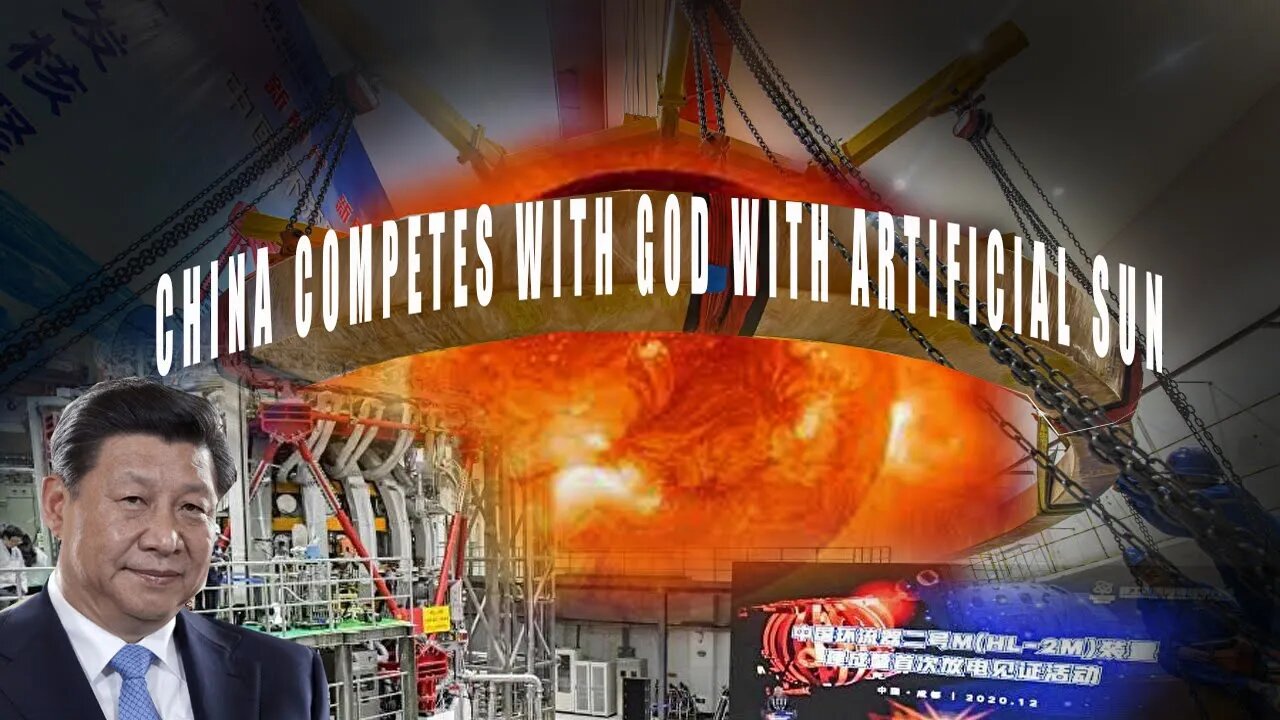Premium Only Content

China made an artificial sun that can compete with God's sun, really?
China made an artificial sun that can compete with God's sun, really?
Experimental fusion reactors can help unleash almost infinite clean energy.
China's "artificial sun" set a new world record after heating the plasma circuit to five times the temperature of the sun for more than 17 minutes, state media reported.
According to Xinhua News Agency, the EAST (Experimental Advanced Superconducting Tokamak) fusion reactor maintained a temperature of 158 million degrees Fahrenheit (70 million degrees Celsius) for 1056 seconds. This achievement will allow scientists to take a small but important step towards creating an almost limitless source of clean energy.
China's experimental fusion reactor broke the previous record set by France's Tore Supra Tokamak in 2003. There, the plasma in the coiled loop remained at the same temperature for 390 seconds. EAST set another record in May 2021, running for 101 seconds at an unprecedented temperature of 216 million F (120 million C). In contrast, the actual center of the sun reaches temperatures of around 27 million F (15 million C).
"Recent operations have laid a solid scientific and experimental foundation for the operation of fusion reactors," said Gong Xianzu, researcher and experimental leader at the Institute of Plasma Physics of the Chinese Academy of Sciences.
For more than 70 years, scientists have tried to harness the power of fusion, the process of burning stars. By fusing hydrogen atoms to form helium at very high pressures and temperatures, so-called main series stars convert matter into light and heat, producing large amounts of energy without producing greenhouse gases or long-lived radioactive waste.
However, reproducing the state at the heart of a star is not an easy task. The most common design of fusion reactors, the tokamak, heats plasma (one of four states of matter consisting of positive ions and negatively charged free electrons) and then a donut shape with a strong magnetic field.
However, keeping the plasma turbulence and superheat coil in place long enough for fusion to occur was a painstaking process. Soviet scientist Natan Yavlinsky designed the first tokamak in 1958, but no one has been able to build an experimental reactor capable of releasing more energy.
One of the main hurdles is how to deal with a plasma hot enough to melt. Fusion reactors require very high temperatures (many times hotter than the sun) because they must operate at much lower pressures than where fusion occurs naturally within a star's core. .. Cooking the plasma at a higher temperature than the sun is a relatively easy part, but how to wrap the plasma so it doesn't burn the reactor walls (either by laser or magnetic field) without compromising the fusion process. It is technically difficult to find.
EAST is expected to cost more than $1 trillion to China by the end of the experiment in June, and will cost more than $1 trillion in the International Thermonuclear Experimental Reactor (ITER), a larger fusion project currently under construction. The technology. Marseille, France.
created with the voices from LOVO @ www.lovo.ai : Sharon Huang
-
 LIVE
LIVE
The Charlie Kirk Show
1 hour agoPardon Derek Chauvin + Buh-Bye, BLM + Destroy the Deficit | Sen. Scott, Ben Shapiro | 3.10.25
7,693 watching -
 58:52
58:52
The Dan Bongino Show
4 hours agoThe Left Can't Meme And Can't Win (Ep. 2438) - 03/10/2025
572K1.15K -
 1:01:32
1:01:32
The Rubin Report
3 hours agoTrump Addresses Rumors of Elon Musk & Rubio Clashing in Cabinet Meeting
46.3K20 -
 2:09:05
2:09:05
Steven Crowder
5 hours agoTrudeau Out, Carney In: Who Is Canada’s Anti-Trump Puppet?
390K196 -
 1:04:31
1:04:31
Timcast
4 hours agoDemocrat Machine IMPLODING, Biden AUTOPEN Scandal & ActBlue's COLLPASE Signal END Of Deep State
98.4K80 -
 1:49:52
1:49:52
Benny Johnson
3 hours agoTrump Orders BLM Plaza DISMANTLED in DC, DHS Launches DEPORTATION App | Secret Service KILL Gunman!?
108K49 -
 1:02:07
1:02:07
Kyle Fortch
4 hours ago $0.18 earnedOllie Joseph: 100,000,000 Streams Organically & The Creation Of "Mountain Pop" | THE ONE SHEET S1E7
10.2K -
 16:47
16:47
T-SPLY
6 hours agoDemocrats Keep Pushing For A Government Shutdown In A Historically Dumb Move
7.96K6 -
 2:12:48
2:12:48
Matt Kohrs
15 hours agoStock Market Crash News & Predictions || The MK Show
62.3K7 -
 2:01:15
2:01:15
LFA TV
23 hours agoKASH AFRAID FOR HIS LIFE! | LIVE FROM AMERICA 3.10.25 11AM
45.5K12